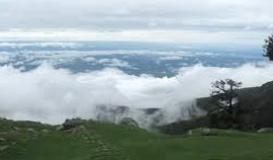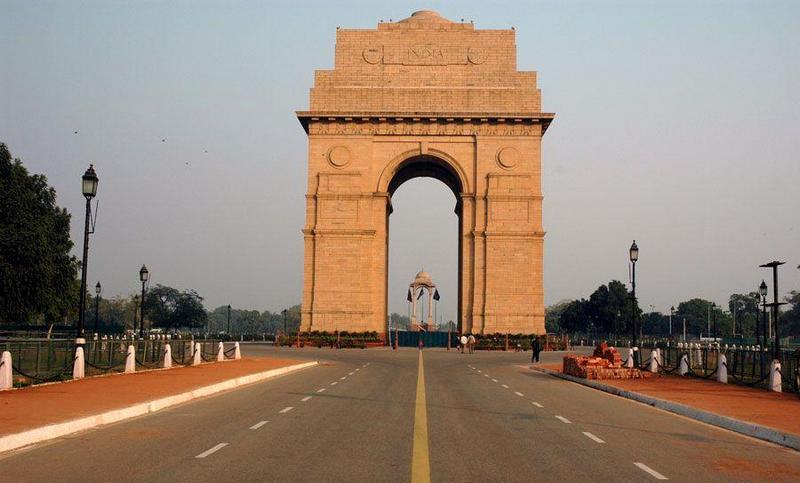Manali
Blessed with some of the most spectacular and beautiful landscapes
anywhere, it is a travellers paradise -lofty snow peaks, deep gorges,
lush green valleys, fast flowing rivers, enchanting mountain lakes,
flower bedecked meadows, beautiful temples and monasteries steeped in
time. May it be for relaxing, sightseeing, trekking, mountaineering,
fishing, para-gliding, skiing, ice skating and golf, Himachal has it
all...Come Explore Himachal with himachaltourist...
The valley of gods, as the Kullu valley has come to
be known, is perhaps the most delightful region in the western
Himalayas. The ancient Hindus regarded it as the furthest limit of human
habitation - Kulantapitha, and its original name finds mention in the
epics, the Ramayana and the Mahabharata as well as Vishnu Purana.
Like a slender delicate-hued fern glistening in the
morning dew, the valley spreads out its charm on either side of the
upper reaches of the river Beas. Running north to south, the main river
valley is only 80 km long and 2 km at its broadest, yet a fairly wide
area is open to the visitors to enjoy the spectacle of variegated
mountain scenery.
In the spring Kullu is at its most colourful with
pink blossoms and white flowers while the higher slopes are aglow with
gorgeous rhododendrons. With utumn, clear blue skies return and fields
and forests alike show wonderful tints of crimson and ochre. By
December, there is no greenery except the majestic pines and cedars in
the forests. In winter the hillsides are flanked in white.
Situated on the banks of the Beas, Kullu, the
headquarters of the district, serves as a nerve centre of the valley and
is the starting place for a number of treks. The deodar-fringed grassy
maidan, Dhalpur, is a stage for many colourful fairs.
Places to see in Manali
Kothi
12 km. A quiet but picturesque spot. The Rest House
overlooks the narrow valley and commands views of the mountains. Below
Kothi, for more than a kilometre the river Beas flows through a deep
gorge, almost a subterranean passage, 30 metres or more in depth, and
the cliffs which flank both sides of the canyon are a favourite haunt
for rock pigeons. The site of the bridge provides an interesting
historical episode in the early annals of Kullu.
Solang Valley
13 km. A splendid valley between Manali and Kothi
which offers views of the glaciers and snow-capped mountain peaks. The
plateau is frequently used for holding camps by the trekking parties.
Good skiing slopes of the Mountaineering Institute. Venue of annual
winter carnival from February 10-14. Bus service upto Palchan village
(10 km) and then by jeep or on foot.
Rahla Falls
2 km from Kothi. Here the river Beas hurtles down
from a height of about 50 metres. Charming spot for picnics.
Manali Sanctuary
A bridle path from the Manali log huts goes past the
Dhoongri Temple and wanders into the dense deodar, kail, horse
chestnut, walnut and maple forest which is a part of this sanctuary.
Camping overnight in tents at Lambadug or Galiani Thatch is possible.
Lush green alpine pastures and glaciers lie beyond
Galiani Thatch. Musk deer, monal and brown bear are often spotted. For
those who venture still further into the glacier zone in summer, there
are herds of ibex.
Around Manali
Rohtang Pass
51 km. At an altitude of 4,112 metres on the highway
to Keylong, the pass affords a wide-spread panorama of mountain
scenery. In place of the pinnacled hills, sheltered valleys and
cultivated tracts, the eye meets a range of precipitous cliffs, huge
glaciers and piled Moraine, and deep ravines. Almost directly opposite
is the well defined Sonepani glacier, slightly to the left are the twin
peaks of the Geypang, jagged pyramids of rock, snow streaked and snow
crowned.
The Beas river rises near the crest of Rohtang from a
block of Mica-Schist. The pass normally opens for traffic after
mid-June and officially closes in November. To its left, 200 metres
higher, is the little lake of Sarkund (Dashair) visited by a number of
people, the general belief being that a bath in these waters effects a
cure of all bodily ailments-real or imaginary. 10 km before Rohtang is
the barren-landscape of Marhi which hums with activity during summer and
autumn months because almost everyone stops here for refreshments.
Keylong
117 km. A fair sized village amidst green fields of
barley and buckwheat, Keylong is the headquarters of the Lahaul and
Spiti district, surrounded with brown hills and snowy heights. Karding
Monastery overlooks Keylong and is 3.5 km across the Chandra river while
Shashur Monastery is about 1 km. HPTDC Tourist Bungalow.
Triloknath and Udeypur
These are two important places of pilgrimage in
Pattan Valley. At Triloknath is a six armed image in white marble of
Avalokiteshvara, Bodhisattava. Visitors will enjoy crossing the
Chandra-Bhaga river and the trek of 3 km to reach the destination. The
temple of Marikula at Udeypur is highly remarkable for its wood
carvings. Udeypur is 166 km from Manali.
Places to see in Kullu
Raghunathji Temple
1 km. In the 17th century, Raja Jagat Singh
installed here an idol of Lord Raghunathji, which he brought from
Ayodhya. As a mark of his penance he placed the idol on his throne and
it became the presidind deity of the valley.
Vaishno Devi
4 km. A small cave enshrine an image of goddess
Vaishno.Other temples are dedicated to Lord Shiva, Rama and Krishna.
Jagannathi Temple
3 km. A stiff climb leads one to the shrine from where one gets a panoramic view of Kullu town.
Bijli Mahadev Temple
11 km. The Bijli Mahadev temple one of the most
striking temple is set on a spur, and is famous for its 60 ft high staff
which periodically attracts lightning that shatters the Shivalinga.
Each time this happens, it is pieced together by the temple priest.
The Great Himalayan National Park
Located in the beautiful district of Kullu, the 620
sq. km. area has temperate forests - some of the virgin coniferous
forests of the state. Vast areas of alpine pasture and glaciers cap this
park. Among the animals found in this part of the western Himalayas are
musk deer, ghoral, thar, bharal, sewor, brown bear, leopard and snow
leopard. Bird life includes a variety of colourful pheasants - monal,
khalij, cheer and tragopan. A trek through the park to Rekte-Sar, the
origin of the Sainj River and camping amid alpine pastures is a
memorable experience.
Kanawar Sanctuary
This sasnctuary located in the Parvati Valley of the
Kullu District is the habitat of the Himalayan thar. This big goat is
often seen on high mountainous precipices.
A splendid trek is possible along the Garahan Nalla
from Kasol through dense deodar and fir forests. The rest house at Kasol
is convernient and the Range Officer, Wildlife, Kasol, can offer
information and assistance.
Around Kullu
Kaishdhar
16 km. A delightful spot (2,300 metres) for a quiet
holiday where one can commune with nature. Many walks in the
neighbourhood. Forest Rest House provides accommodation.
Bajeshwar Mahadev Temple (Bajaura)
15 km. The pyramidical temple (9th century AD) is
embellished with wonderful carvings in stone and sculptural decorations.
The three large image slabs on the exterior are all of a high order of
sculpture in the Indian classical (Shikara) style.
Kasol
42 km. Situated on the banks of Parvati river, Kasol
in the Parvati valley makes a good holiday destination. Charmingly
located in an open space which slopes down to a broad expanse of clear
white sand at the edge of the river. The place is known for trout
fishing.
Manikaran
45 km. On the trekking route to Pulga and Pin
Parvati pass, Manikaran is famous for its hot springs. Thousands of
people take a dip in its hot waters. The water is so hot that dal
(pulses), rice etc. can be boiled in it. It is also a well known
pilgrimage centre and there is an ancient Hindu temple and a gurdwara
here. According to a legend, Manikaran is also associated with Lord
Shiva and his divine consort, Parvati, who lost and recovered her
ear-ring here.
Larji
34 km. South of Kullu at an elevation of 957 metres,
this is a small hamlet providing excellent trout fishing. A Rest House
is located in a stunning position, at an angle between the foaming
torrents of the rivers Sainj and Tirthan, before they join the Beas a
few hundred anglers.
Pulga and Khirganga
16 km. A stiff march takes one to the restful
solitude of the Forest Rest House whose immediate environment affords a
sylvan and peaceful retreat for body and mind. The Tos nullah, which
branches off from the main Paravati valley is well worth exploration by
those who favour the wilder aspects of natural scenery and are prepared
to camp out. 10 km from Pulga lies Khirganga which is well-known for its
hot springs.
Banjar
58 km. an excellent spot (1,534 metres) for trout
fishing in Tirthan river. the famous temple of Shringa Rishi is located
here in whose honour a fair is held every year in May.
Accommodation is available at a PWD Rest House.
Shoja
13 km from the Banjar PWD Rest House (2,650 metres)
on the Kullu side of the Jalori pass, it is located in a setting of
marvellous scenic surroundings.
Raison
16 km. On the way to Manali, it is an ideal site at
an elevation 1,433 metres for spending a quiet holiday in solitary
splendour and for holding youth camps and rallies. On the gurgling banks
of the Beas there are 14 wooden huts of HPTDC.
Katrain
20 km. The central and the widest part of the valley
on the way to Manali and at a height of 1,463 metres. Apple orchards, a
Fruit Research Station and a trout hatchery lend prominence to the
place. HPTDC's Hotel Apple Blossom and Tourist Cottage.
Naggar
28 km. On the left bank of the Beas and about three
hundred metres above the river, Naggar is delightfully situated on a
wooded slope and commands an extensive view, especially of the north
west of the valley. It is an excellent place for a longer stay. Naggar
was the capital of the Kullu Rajas for about 1,400 years. There are a
large number of famous temples in and around Naggar. Artist Nicholas
Roerich's art gallery is also worth a visit. Cars and jeeps can easily
go up to the Naggar Castle which is now Himachal Tourism's well
furnished Hotel Castle.
Malana
28 km. up to Naggar by bus and then 20 km. on foot. A
little ahead off the beautiful Chandrakhani pass lies the tiny village
of Malana, famous for the temple of Jamlu and its distinct social and
cultural life. Reputed to be the oldest democracy in the world in
existence where all the inhabitants of the village take part in managing
its affairs. An exciting place for trekking.





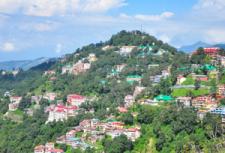



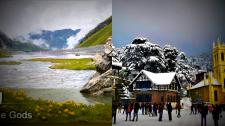

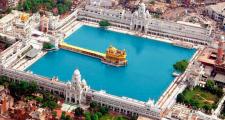
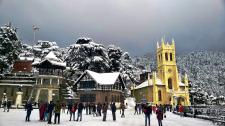

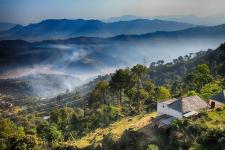
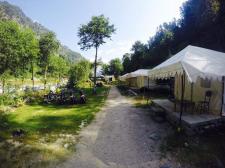





.jpeg&new_height=160&new_width=225)

